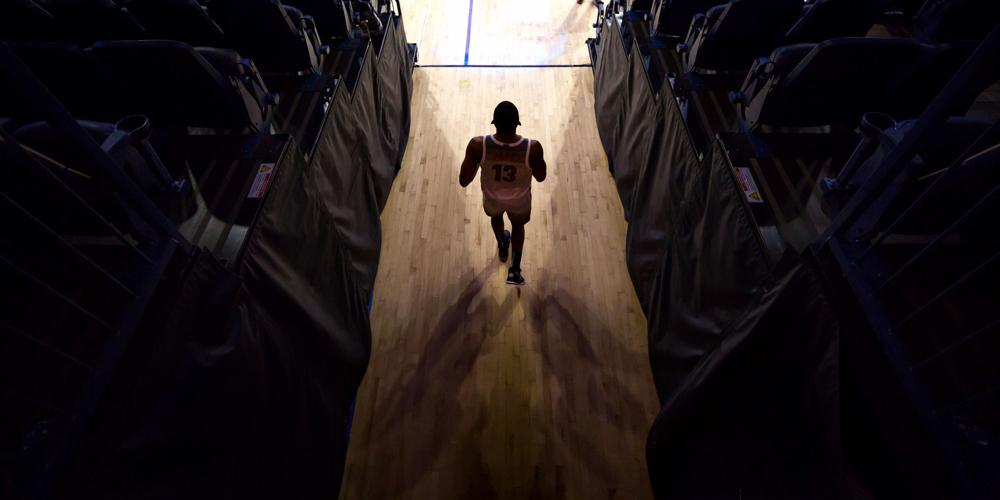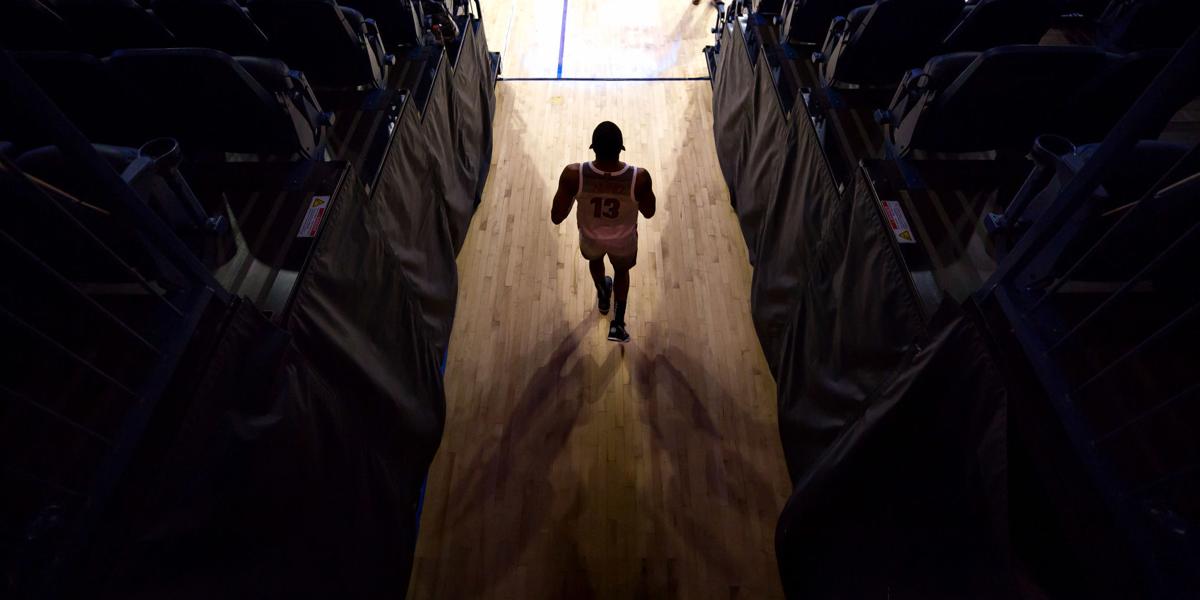When the Arizona Wildcats jog into ASU’s Desert Financial Arena on Thursday, Michael Phelps (or some random bare-chested dudes) won’t be popping out of the “Curtain of Distraction.” There won’t be a full, rowdy 942 Crew student section. Nobody will be around to wear “No Pity for the Kitty” T-shirts or wave signs of similar sentiments.
And ever-demonstrative ASU coach Bobby Hurley will have exactly no one other than his own players to fire up.
The Sun Devils’ homecourt advantage will be reduced, for sure. But maybe not by quite as much as appearances suggest.
College basketball analytics guru Ken Pomeroy says home teams have won conference games 56.6% of the time so far this season, compared with 60% over the previous four seasons, and has adjusted his homecourt factor to two-thirds of what it was with fans present.
But that only translates into about a point less of an advantage than what he’d normally assign to a home team, depending on the team and arena in question — while two Las Vegas oddsmakers say they are generally giving home college basketball teams about a half-point or full point less per game.
“It’s very, very minimal,” says Jay Kornegay, executive VP of Superbook operations in Las Vegas. “I hate to say that for all the fans. You know, hey, I go to the games and yell and stuff like that — and I think I’m making a difference. But you’re probably talking about a half-point between having fans there and not having fans there. Being familiar with the court, the rims, the background, is probably more of a factor.”
In the case of Thursday’s UA-ASU game, Kornegay said, the line will be set at exactly what it would have been with fans: He said his early analysis Tuesday has Arizona as a two-point favorite if ASU is still missing players and a “pick ’em” (where neither team is favored) if ASU has its full roster.
Typically, oddsmakers will determine their own power ratings for each team, then add three or four points to the home team, and set their line based on the resulting differential.

UA forward Tibet Gorener flexes after a dunk by center Christian Koloko during the first half of Arizona’s 88-74 win over Colorado on Dec. 28. Experts say homecourt advantages are more or less the same this season despite empty arenas.
Jimmy Vaccaro, oddsmaker at Las Vegas’ South Point Hotel and Casino, said NFL home-field advantage is considered more significant but all sports this season require a careful evaluation of what a home edge might be.
“You’re looking at everything, no matter what sport, and every sport is going through the same insanity that we’re going through,” Vaccaro said. “There’s more to look at when you have a Saturday college basketball lineup and there’s 75 games, especially if you see something like, ‘They beat this team in November, no home field advantage here,’ so instead of three (points) we’re gonna open it at two. … (Or) if someone looks like a plus-seven and there’s nobody in the stands, no college kids going to the game, you might open the game at six. Stuff like that.
“It’s all just the way you feel, and you know what? It’s been working so far, that I can tell you.”
Adam Burns, BetOnline.ag SportsBook manager, added that in college basketball “certain home courts have more value than others.” Exactly how much, not surprisingly, something Pomeroy has already tried to quantify.
In a blog post he admitted was “pretty dense reading,” Pomeroy says he derives a homecourt advantage rating via a model that looks at past disparities of fouls, points, non-steal turnovers, and blocks between home and road games. He estimates Arizona’s McKale Center edge at 3.5 points, the 88th biggest in Division I.
That numbers resulting from that model aren’t being updated this year, Pomeroy said, because it would take five or six seasons of data without fans to get meaningful numbers.
But one key number within that model is jumping out: The decrease in foul differential that normally favors a home team, or what Pomeroy has referred to a “home foul advantage.”
Home teams have been called for 0.53 fewer fouls per game than their opponents this season compared with 1.25 in the past four seasons, Pomeroy said, which is “surely an effect of officials being less influenced by fans.”
In Arizona’s case, the swing is even wider. The Wildcats are averaging two fewer fouls than opponents in home games this season, compared with 1.29 fewer last season — and are averaging two more fouls than opponents on the road compared with only 0.7 more last season.
On New Year’s Eve this season, UA’s fouling numbers produced one particular data point that suggests maybe homecourt — or home-foul — advantage really does shrink without fans.
In Washington’s normally rowdy Hec Edmundson Pavilion — where student fans normally stand throughout a tightly packed courtside section, easily heard by players and officials alike — the Wildcats committed only 16 fouls while playing before no fans. They won easily, 80-53.
But if the Wildcats were enjoying any sort of “advantage” that night in not having to deal with Huskies fans, UA coach Sean Miller was looking instead at a bigger picture.
“It’s almost like I would never admit that it’s better without fans,” Miller said after that game. “I don’t think any of us can wait to have another day before we can have play in front of our crowd or packed house.
“Even on the road, that’s part of the challenge of sports, especially college sports, being able to go on the road and win. It’s more difficult with fans for sure. I think all of us just look forward to the day when that returns to sports in general.”






